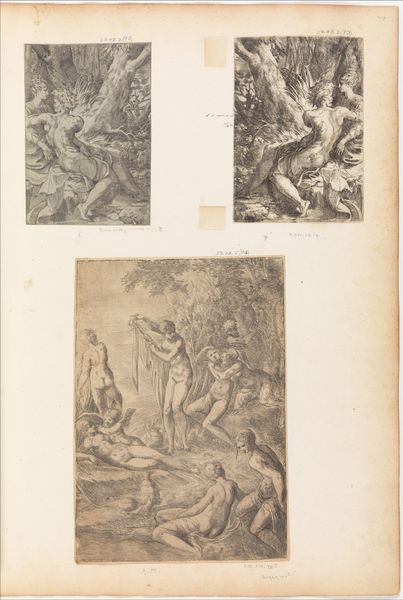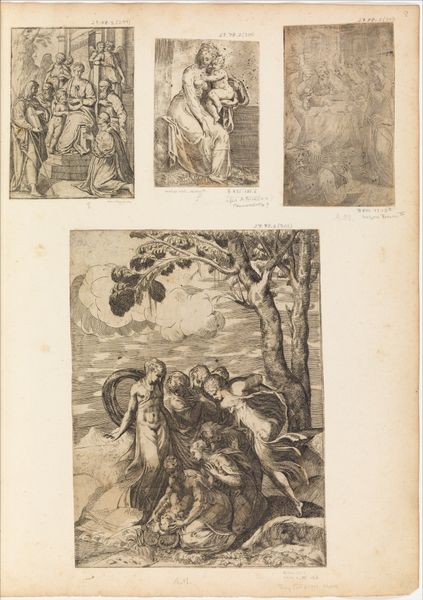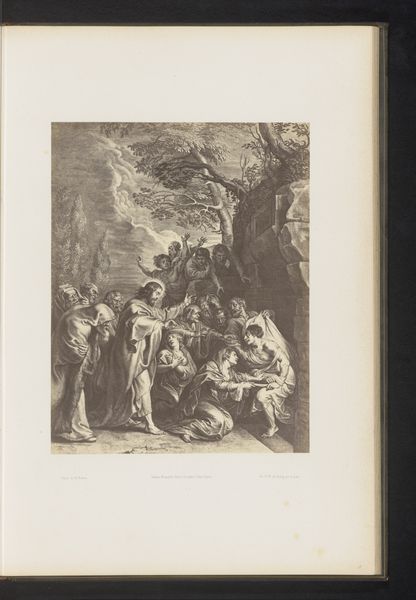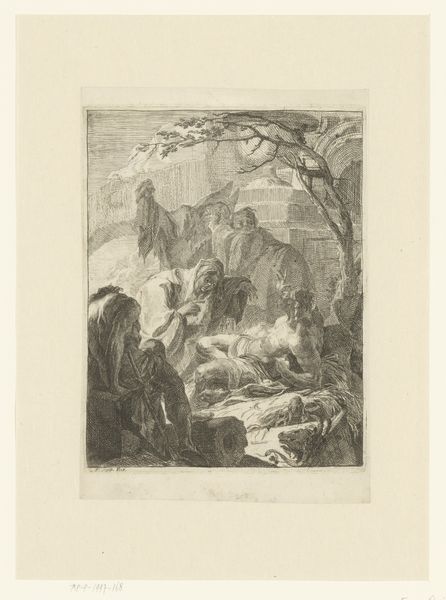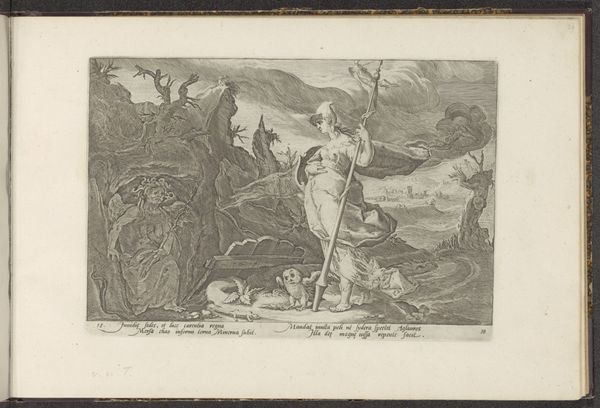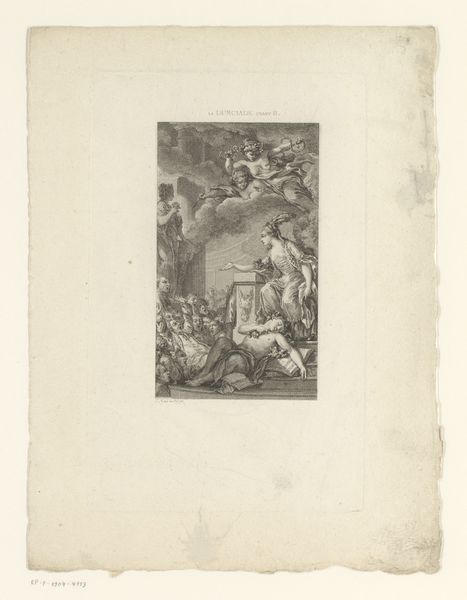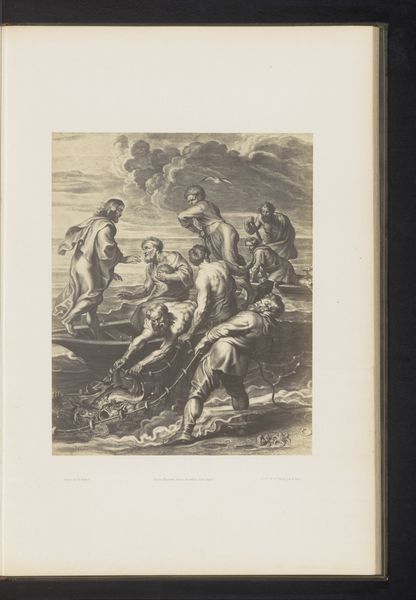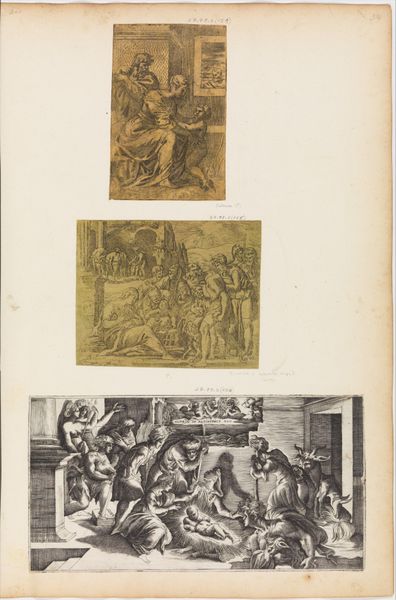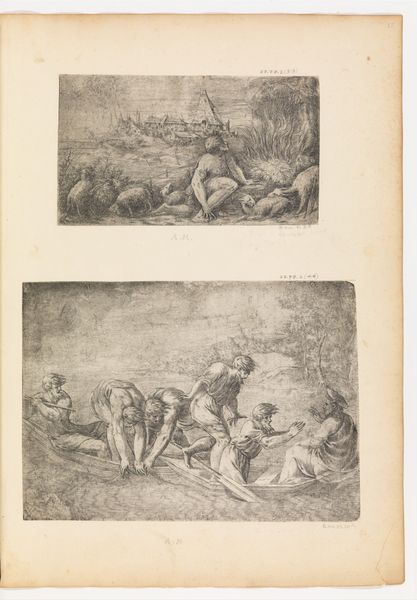
drawing, print, engraving
#
drawing
# print
#
figuration
#
coloured pencil
#
italian-renaissance
#
nude
#
engraving
Dimensions: 10 1/4 x 7 5/8 in. (26 x 19.3 cm)
Copyright: Public Domain
Curator: What strikes me immediately about this print, Antonio Fantuzzi's "Nymphs Bathing" from 1543, is the density of the figures, their overlapping and entwined poses creating a sense of depth. Editor: It's visually dense, definitely. There’s a stark contrast between the dark lines of the engraving and the areas left untouched. I'm interested in the production itself—what was the printmaking scene like at the time, and how accessible would this image have been? Curator: As a print, its circulation would have been wider than a unique drawing, fulfilling a desire for accessible classicizing imagery characteristic of the Italian Renaissance. The arched format and layered composition draw from established traditions of representing the female nude in a pastoral setting. Editor: Let’s dig into that “accessibility” claim. How long would something like this take to produce, and what was the economic model underpinning these workshops? Who owned the means of production, and what dictated their subject matter? I am less concerned about its references than its realities. Curator: Well, to set aside those pressing material considerations for a moment, observe how Fantuzzi uses line to create a sense of form and movement. The gestures of the nymphs, though idealized, still possess a dynamic quality, suggesting an underlying energy. Look, particularly, at the modulation of line weight to define musculature and drapery. Editor: All well and good, but if we ignore the labor behind these “idealized” forms, we miss the broader social context shaping not only the image, but who had the privilege to even view it. Was Fantuzzi working independently, or commissioned? What kind of tools were being used? What pigments, and where did those materials come from? Curator: Regardless, the enduring appeal of “Nymphs Bathing” surely rests in its capacity to evoke a timeless, mythological world, crafted by linear grace and structured tonal arrangements. It suggests a dream, more than it denotes hard facts. Editor: But "dreams" are shaped by very material conditions, aren’t they? That tension between idealized form and grounded reality feels like the heart of the Renaissance itself, when luxury was supported by less pretty conditions. Thank you for pointing out such compelling structural properties in relation to its cultural background.
Comments
No comments
Be the first to comment and join the conversation on the ultimate creative platform.
